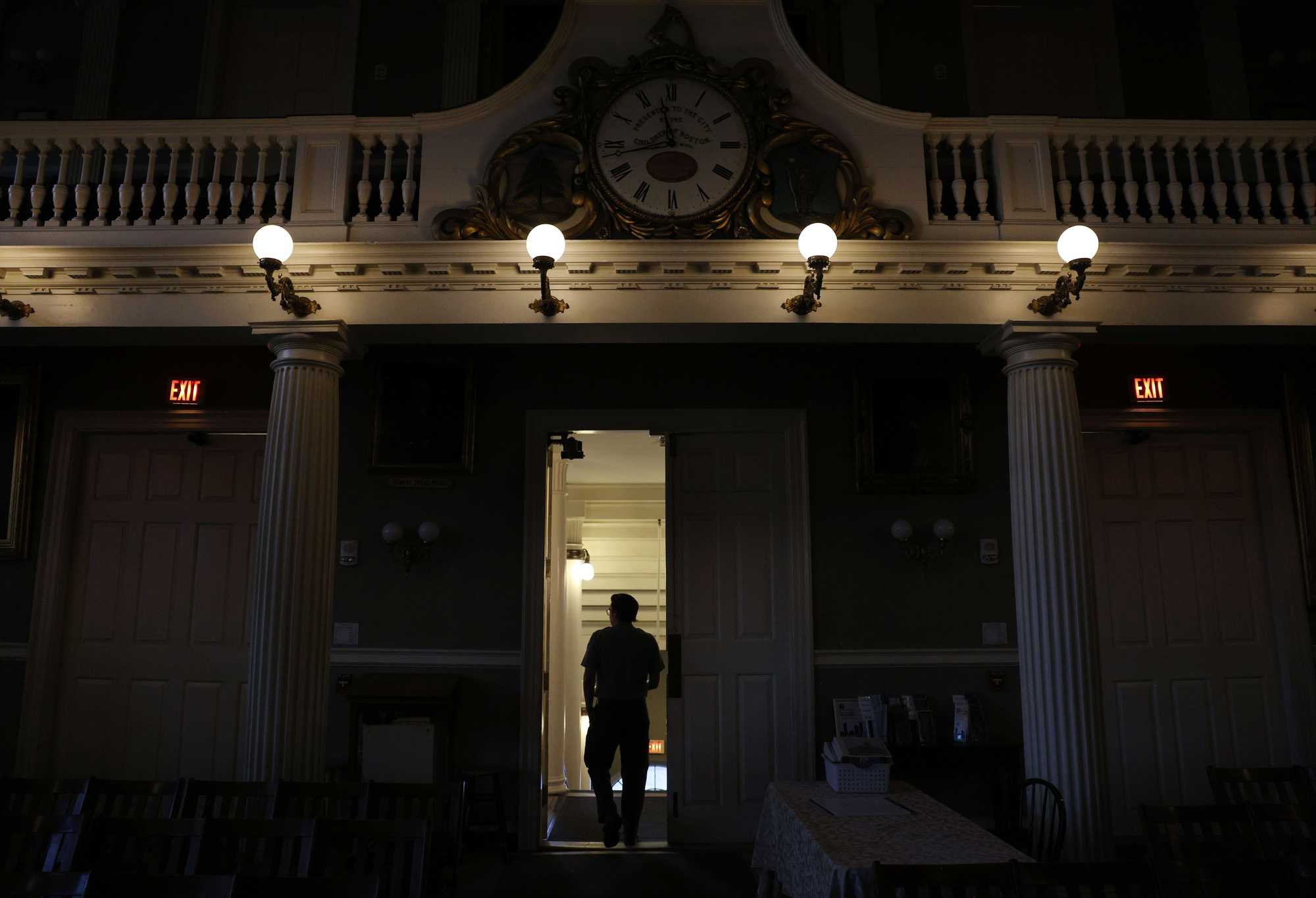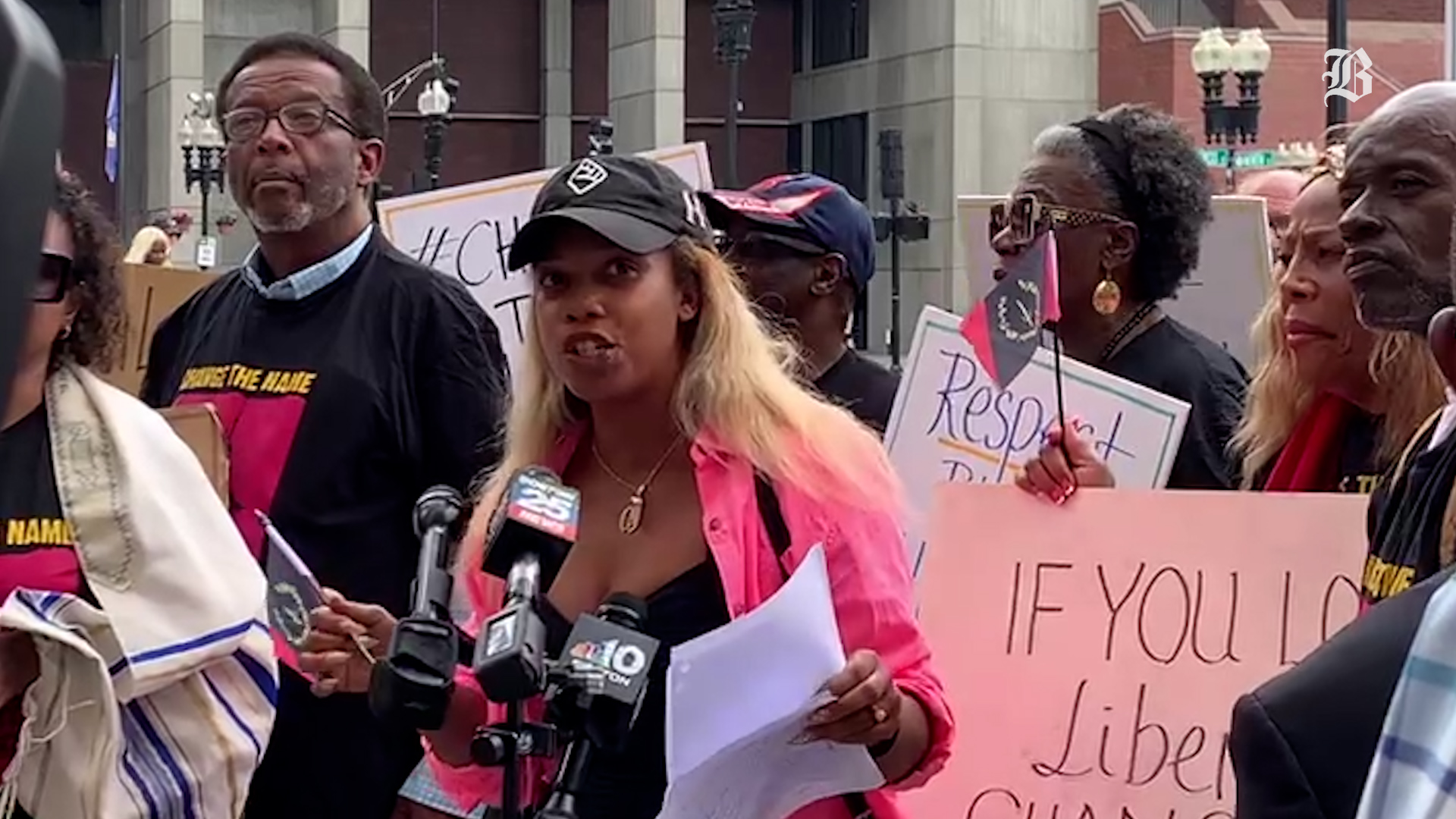Who was Peter Faneuil? A Bostonian, merchant, philanthropist — and slave trader.
Most Bostonians know little about the man for whom Faneuil Hall is named, who enriched himself by trafficking in human beings. Should knowing that history change the way the city remembers him?
Bells tolled, shops closed, and a grand cortege of Colonial Bostonians circled the Town House one late-winter day in 1743, trailing a yellow-plated coffin, draped in black velvet, for a short, solemn procession to the Granary Burying Ground.
The coffin contained the body of Peter Faneuil, a 43-year-old merchant prince who had relentlessly parlayed his many connections across the Atlantic world into a sprawling business empire whose success and reach had made him one of Boston’s richest men and greatest benefactors.
Faneuil shipped salted cod and New England timber to Europe and the West Indies. He built stout trading ships for merchants at home and abroad, importing French and Spanish luxuries for the Colonial well-to-do. He struck deals for wheat, rice, and corn harvested in the Middle Atlantic and Southern colonies. In short, he enthusiastically traded in almost anything of value.
Including human beings. Faneuil was an active trafficker who financed or was connected with voyages to West Africa and the Caribbean to purchase hundreds of people. And he enslaved at least five people to serve his own household.

What a household it was. As the train of mourners neared the cemetery, they passed Faneuil’s magnificent mansion on Tremont Street. Set on seven acres adorned with terraces, fruit trees, and a summer house shaped like an Asian pagoda, the estate offered its owner a place to relax in manicured gardens and scan a bustling harbor that welcomed 600 ships a year from foreign ports.
From his palatial estate, Faneuil also could have viewed the new market and meeting hall he had built for his adopted hometown. Its two stately stories of red brick, which rose beside Town Dock, became a wonder of the waterfront when it opened in September 1742, only six months before Faneuil’s death.
A gateway to the most important port in British North America, the building stood near another local wonder, Long Wharf, which extended 1,500 feet into the harbor from the foot of King Street, today’s State Street.
The donated building’s second-floor meeting room already had been named Faneuil Hall by the town, and it was there that much business of local Colonial government was conducted — from selectmen’s gatherings, to Town Meetings, to elections for the provincial Legislature.
On the ground floor, a market served as a central location for Bostonians to buy meat, fish, produce, and myriad other necessities that previously had been sold door to door, or purchased on time-consuming trips to open-air markets at Roxbury Neck and other out-of-the-way places.
“I hope what I have done will be for the service of the whole country,” Faneuil, a first-generation American of French Huguenot descent, said of his gift to the town.
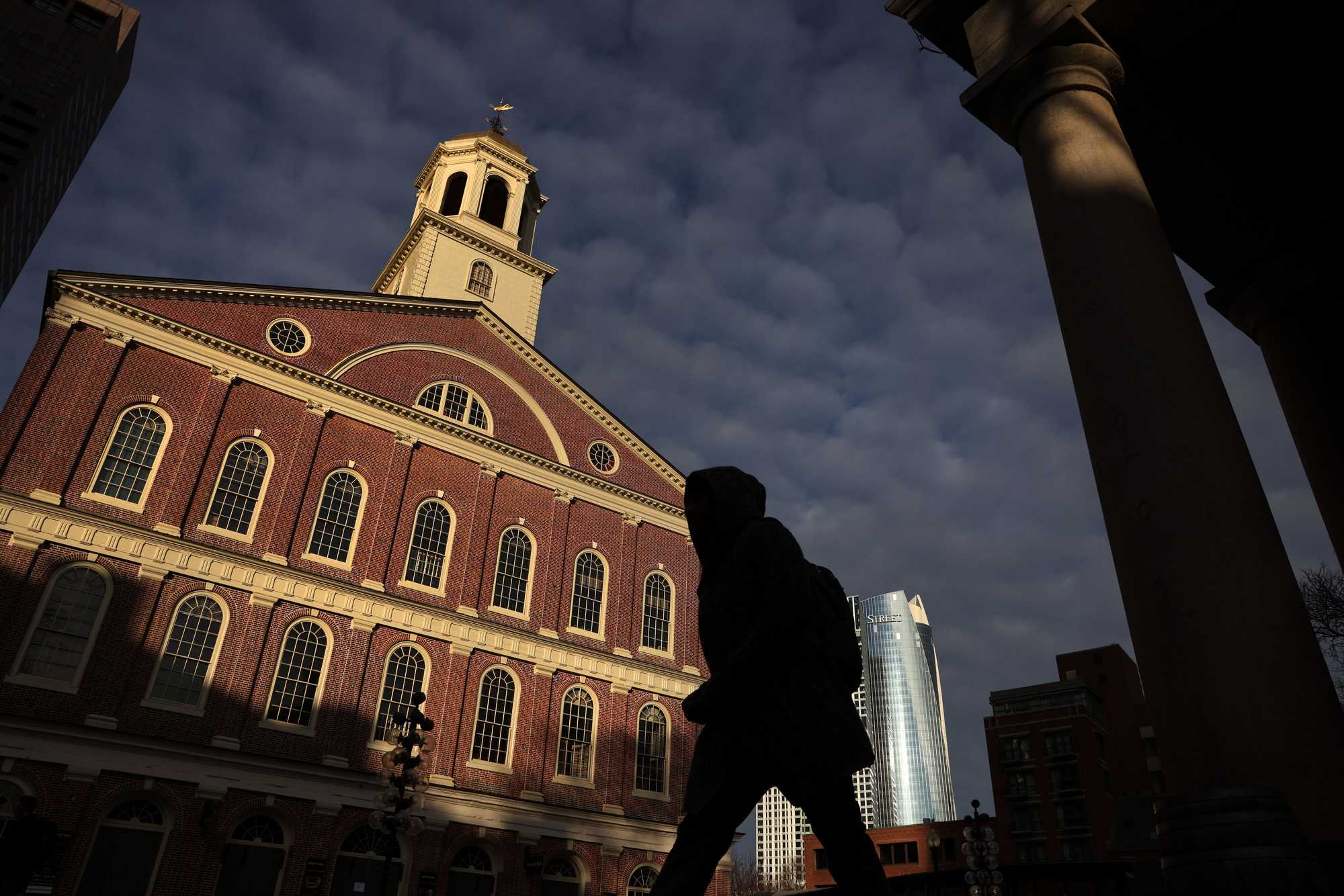
John Lovell, master of South Grammar School — later known as Boston Latin School — told Bostonians at a memorial service at Faneuil Hall that its namesake benefactor had achieved his goal.
“This building,” Lovell said, “erected by him at an immense charge, for the convenience and ornament of the town, is comparably the greatest benefaction ever yet known to our western shore.
“These walls, the present monuments of his fame, shall molder into dust,” Lovell said. “These foundations, however deeply laid, shall be forgotten. But his deeds, his charities, shall survive the ruin of nature.”
Those words might have rung true for many Bostonians of the time, but the passage of 280 years has proved the schoolmaster wrong on both counts.
Faneuil Hall still stands, of course, the anchor of historic Quincy marketplace, built many decades later. But much of Faneuil’s own story has been lost to time.
Especially the depth of his connection to the trans-Atlantic slave trade — and of Boston’s.
But today, his prominence in the slave economy that was the engine of so much of Boston’s early wealth has prompted a fresh assessment of his complicated legacy, one that reckons with the city’s history more frontally than ever before.
And at city-owned Faneuil Hall, often called the Cradle of Liberty, the threads that make up that long and complex tale — both the stirring and the shameful ― are woven inextricably together. That reckoning raises the question: Should a city proud of its reputation as a force for progressive ideals continue to honor a man who bought and sold human beings?

The Boston of Peter Faneuil’s heyday was just over 100 years old, and had grown from a precarious Puritan outpost to a thriving town of 16,500 people, with shops and taverns and 10 churches crowded onto a rocky peninsula only two miles long.
The town — it would not incorporate as a city until 1822 — was connected to the world by the sea and to the mainland by an isthmus just 120 feet wide, where Washington and East Berkeley streets cross today. That pinched boundary was guarded by a wooden gate and was hard by the town gallows, a warning perhaps of the limits of local hospitality.
The town had quickly emerged as one of the financial capitals of the Colonial era, and slavery had much to do with that. Indeed, the trade in human lives was enmeshed in the town’s growing economy almost from the start; the first enslaved Africans stepped ashore here in 1638, just eight years after the first Puritan contingent arrived.
About 1,600 enslaved people would live in the town a century later — accounting for at least 10 percent of the population — and they were owned by merchants and artisans, ship captains, tavern owners, and ordinary families in need of a domestic. About one in five families enslaved at least one person.
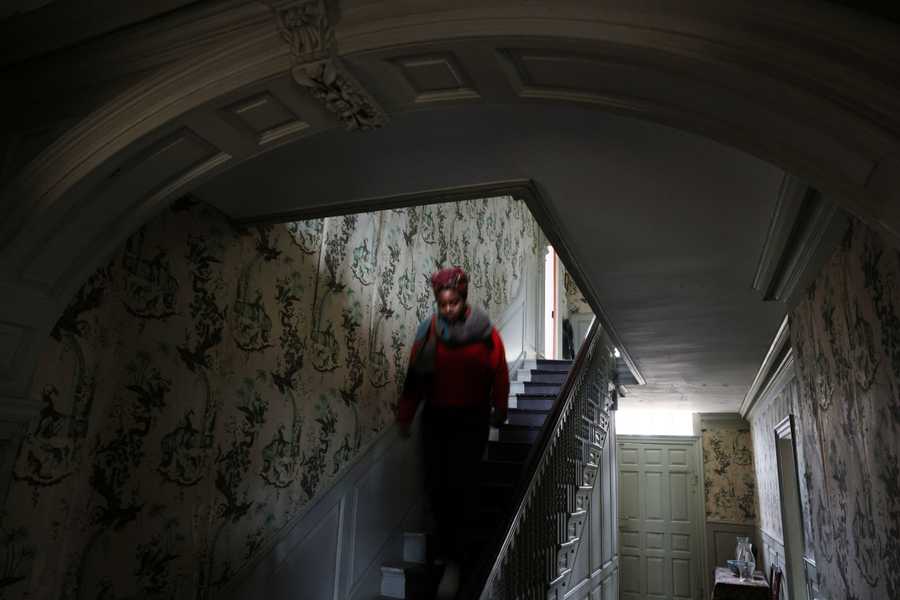
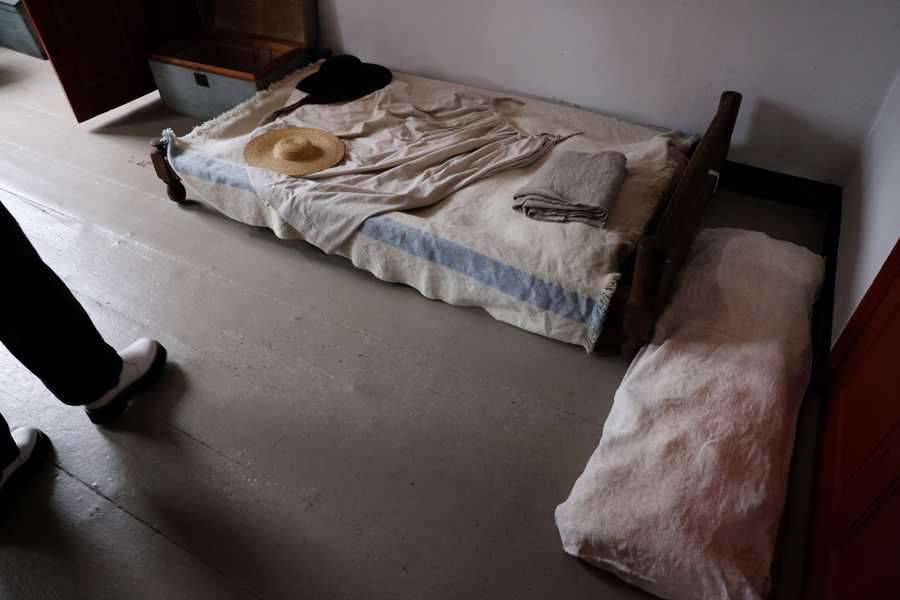
Peter Faneuil was far from the only slave trafficker in Boston, or even the most prominent, but the business derived from slavery — and mercantile trade in other goods driven by its profits — had placed him among the elite. Cramped and crowded, Boston bristled with businesses of all kinds, and its maze of narrow streets brought townspeople past blacksmiths, coopers, silversmiths, and booksellers offering titles from London.
By Faneuil’s time, the town’s strict Puritan beginnings — when religious practice and principles governed everyday life — had begun drifting into memory. Instead, Boston now seemed captivated by wealth.
And few in North America had amassed more than Faneuil, who inherited a lucrative business built by his uncle Andrew, one of three brothers who fled France after 1685 when King Louis XIV, a staunch Catholic, revoked the religious and civil liberties of French Protestants like the Faneuils.
Peter moved from New Rochelle, N.Y., to Boston at age 19, after his parents had died, to join his uncle and learn the business. Peter’s younger brother Benjamin also moved to Boston, but Peter became the favorite — possibly, in part, because he followed his widowed uncle’s wishes and never married.
There was much business to transact, but a cornerstone of the family’s trans-Atlantic dealings was the seemingly inexhaustible supply of sugar and molasses that Boston traders imported from the Caribbean to make rum and other products.
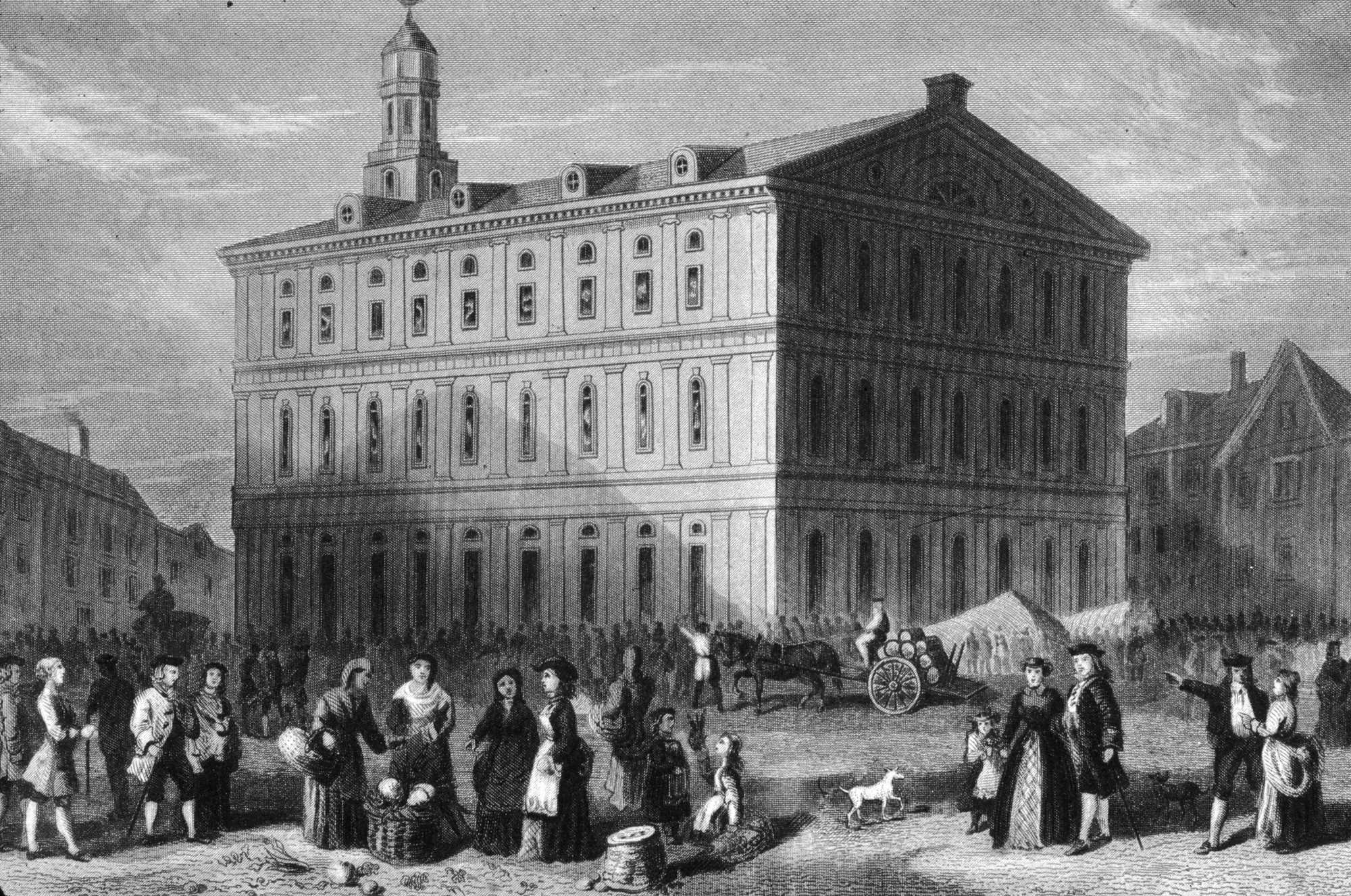
Not only did labor by enslaved people produce these goods, but the below-grade fish that plantation owners fed them — “refuse fish” that European markets would not accept — was supplied from North Atlantic fishing grounds by Faneuil and other New Englanders.
“The entire British Colonial imperial system is inextricably embedded in the rise of these plantation economies. They were the riches of the British Colonial world,” said Mark Peterson, a Yale University history professor who has written about Boston’s maritime prowess.
It was a system both circular and cruel, one in which profit could be made by feeding enslaved people, by housing them with New England timber, and by exploiting their forced labor in the West Indies. And through its full-throated exploitation of this system, Boston became an indispensable driver of trans-Atlantic commerce that relied on slavery as its engine.
“Boston is built on the business of slavery, whether that’s slave trading or trading with the slave economies in the Caribbean,” added Jared Ross Hardesty, a history professor at Western Washington University.
Faneuil benefited from the system more than nearly anyone else in the colony. From his waterfront offices, he oversaw a commercial empire that included bankers and agents in London, Rotterdam, Barcelona, and elsewhere. Portly and of ruddy complexion, he was a canny and indefatigable middleman.
“This man’s capital, this man’s influence, this man’s empire of goods and contacts and enslavement is part of this large system that created the Atlantic world, that created the economy that built colonies like Massachusetts,” said Eric Hanson Plass, a public historian with the National Park Service who formerly served as lead ranger at Faneuil Hall.
Recent painstaking research into Faneuil and his enterprise by Hanson Plass and other rangers at the hall has gone a long way toward filling out this long-incomplete chapter in Boston history. They generously shared their findings with the Globe.
Among the treasures they reviewed was a 1739 letter from Faneuil to Captain Peter Buckley, sailing for the Caribbean, which shows how the merchant, like so many of his contemporaries, had reduced Black human beings to commodities.
“Purchase for me, for the use of my house, as likely a strait-limbed Negro lad as possible as can, about the age from 12 to 15 years,” Faneuil wrote matter-of-factly in the letter, which is held by the Massachusetts Historical Society.
“He’s ordering a child, and I hate saying this, like you would order what you need in a new car,” said Peter Drummey, the society’s chief historian.
Boston February, 3, 1739
Capt. Peter Buckley
Sir
Herewith you have Invoice of Six hhs. fish &8 Barrels of alewifes, amounting to £75.9.2—which when you arrive at Antigua be pleased to Sell for my best advantage, & with the net produce of the same, purchase for me, for the use of my house, as likely, a strait limbed Negro lad as possible as can, about the Age of from 12 to fiveteen years, & if to be done one that has had the small pox, who being for my Own service, I must request the favr. you would let him be one as tractable a disposition as you can find, wch I leave to your prudent care& management, desireing after you have purchased him, you would send him to me by the first good Opportunity recommending him to a Particular care from the Captain, by whom you send him. Your care in this will be an Obligation—I wish you a good Voyage & am
Sr. your humble Servant,

Peter Faneuil
PS—If there shulde not be eno. to purchase the boy desired be pleased to adve. & if any over plus, to lay it out for my best advantage, in any thing you think proper.
P.F.
Once brought to Boston, enslaved people were sold on the town’s docks, in its homes, and in its streets and taverns. Anywhere, that is, where a sale could be consummated. Some advocates for changing the name of the hall have claimed that a slave-auction block stood in front of Faneuil Hall, but several historians said no evidence for one has been found.
“It wasn’t as simple as that, but it was much more insidious,” Hanson Plass said.
Hanson Plass saw a rare opportunity during the COVID-19 lockdown, when Faneuil Hall and other National Park Service sites had been shuttered. He had plenty of time to try to answer a question that had long fascinated him: Just who was this Boston legend that the city’s most famous public building — and his workplace — had been named for?
To dig into Faneuil’s past, Hanson Plass assembled a team of fellow rangers who pored line by line over the merchant’s papers at Harvard Business School, where they focused on Faneuil’s letters and ledgers to document in meticulous detail how selling enslaved Africans and profiting from their labor had made him an ever-richer man.
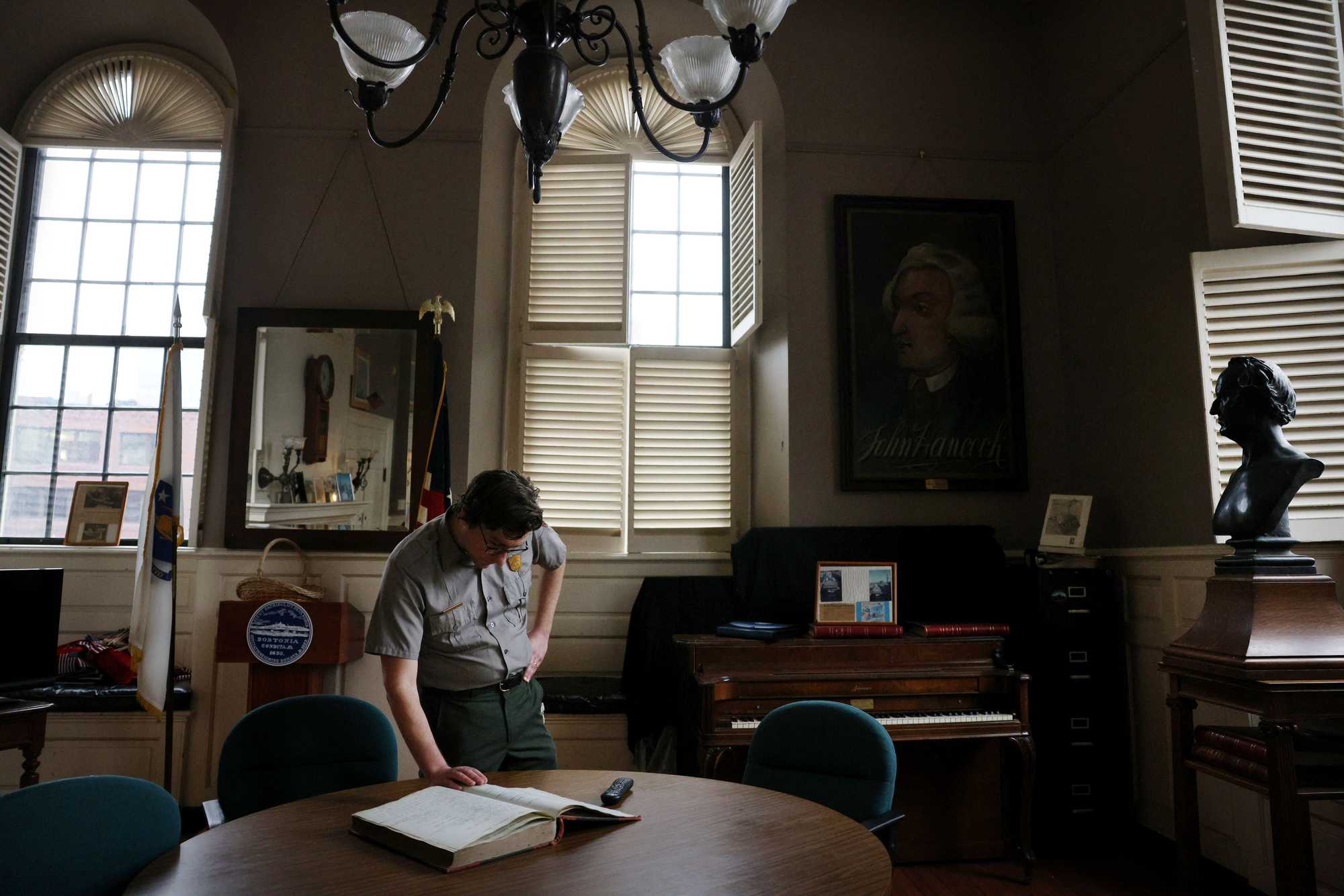
The research, Hanson Plass said, showed Faneuil had a greater link to slave trafficking than was widely known.
“It is safe to reckon that Faneuil had direct involvement in the enslavement and trafficking of at least 200 human beings,” Hanson Plass said.
In addition to the Harvard papers that include Faneuil’s only surviving letterbook, containing correspondence between 1737 and 1739, the team studied Colonial maritime and customs records. The National Park Service has made its findings available in an online project titled “The Atlantic Empire of Peter Faneuil.”
No records have survived that show a direct connection between Faneuil’s early career and slave trading. But a paper trail shows that he helped finance at least two voyages to West Africa to purchase people — one in 1739, the other in 1742 — and that the vessels bore an unmistakable stamp of family pride.
The first voyage featured the Mary Ann, a brigantine named for Faneuil’s unmarried sister, who lived in his Tremont Street mansion. The other ship he called the Jolly Batchelor, a jaunty reference to himself. Each trip was captained by a family friend, John Cutler, whose sister had married Peter’s brother Benjamin.
The voyages took Cutler across a treacherous ocean from rocky New England to the tropical mouth of the Sierra Leone River. Once there, Cutler negotiated with European and African middlemen to purchase Africans who had been kidnapped and held by nearby tribes, Hanson Plass said. The Americans traded items such as musket flints, hogsheads of rum, and valuable manufactured goods brought from the colonies.
Cutler knew these middlemen, and they knew Cutler. And when the Mary Ann weighed anchor to return to America, as many as 80 enslaved Africans were chained in its hold, Hanson Plass said.
Ten of them are believed to have died before the Mary Ann arrived at the James River off Williamsburg, Va., on Sept. 15, 1740, Hanson Plass said. After selling his human cargo, Cutler remained in Virginia and used the profits to buy thousands of bushels of corn and wheat, which could be moved in a future deal on Faneuil’s behalf.
Cutler set sail for Boston but contrary winds blew the Mary Ann to Madeira, a group of Portuguese islands off the northwest coast of Africa, according to contemporary newspaper accounts. The 3,000-mile detour proved to be a boon. Cutler parlayed his corn and wheat into a big, unexpected profit for Faneuil, owing to “the inhabitants all being most starved for want of provision,” the newspaper reported.
Once in Madeira, Cutler was “carried about town like an image of Our Savior on festival days, with 10,000 friars and boys whooping and howling with joy,” the report continued. With its coffers flush, the Mary Ann recrossed the Atlantic and cleared customs in Boston in April 1741.
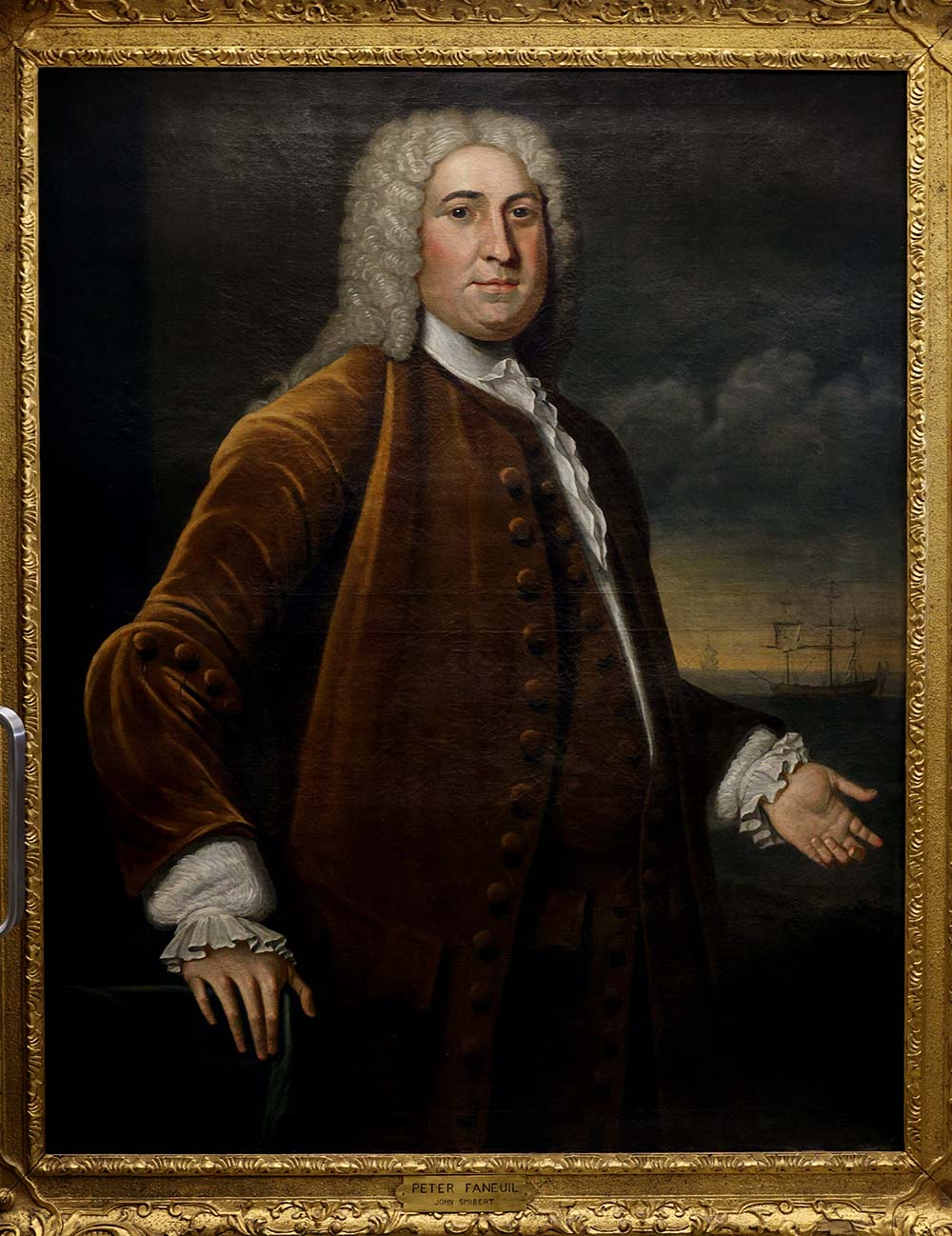
Customs and court records beginning in the late 1730s show Faneuil financed at least two voyages from Boston to West Africa in which he or his heirs profited directly from the sale of human beings.
Captain John Cutler (brother-in-law of Peter Faneuil’s brother, Benjamin) prepares the Mary Ann, named for Peter Faneuil’s sister, for a voyage from Boston to Africa. The ship is owned by Joshua Boutin & Co., with Peter Faneuil as part-owner of the ship.

In 1741, Cutler sets sail again from Boston, this time on the Jolly Batchelor, a newly built, two-masted “snow” whose name is linked to never-married Peter Faneuil, the ship’s half-owner. Ships like the Jolly Batchelor would trade goods such as musket flints, hogsheads of New England rum, and valuable manufactured products.
Boston to West Africa, 1739
Setting sail from Boston, Cutler arrives in present-day Sierra Leone. Once there, Cutler purchases as many as 80 enslaved Africans from European and African middlemen, who themselves would have procured them from nearby tribes. The enslaved Africans are chained in the ship’s hold for the return voyage.
Present-day Sierra Leone to Williamsburg, Va., arriving Sept. 15, 1740
Possibly 10 Africans die on the return voyage. When they arrive in Virginia, the survivors are offloaded and sold. Cutler, remaining in Virginia for three months, obtains goods from the colony. He procures:
- 2,000 bushels of corn
- 2,000 bushels of wheat
Virginia to Madeira, arriving January 1741
En route back to Boston, the Mary Ann is blown off course and arrives in Madeira, a group of Portuguese islands off the African coast. Cutler sells wheat and corn to the inhabitants, who were suffering from a lack of food.
Madeira to Boston, arriving April 1741
The Mary Ann arrives back in Boston in April 1741. The sale of the corn and wheat generates an unexpectedly large profit for Faneuil.
Boston to Foro Bay (Sierra Leone River), arriving in Feb. 1742
Cutler purchases 84 enslaved Africans in present-day Sierra Leone. They are shackled on the ship when it is attacked in March, possibly by Afro-Portuguese pirates. The enslaved Africans are carried off the ship by the attackers — not to be freed, but resold. Cutler is killed, bound with stones, and thrown overboard. The crew flees as the Jolly Batchelor remains abandoned in the river.
Sierra Leone River to Newport, R.I., arriving summer 1743
The crew and others eventually recapture 34 of the enslaved people; sell 12 of them to pay for repairs to outfit the ship for its return voyage; and arrive in Newport., R.I., in summer 1743 with 20 surviving enslaved Africans. The fate of the Jolly Batchelor and its human cargo is determined by Admiralty Court in Newport, where the Africans are auctioned, many to wealthy merchants. The proceeds of the sale are divided among the ship’s owners, who included Faneuil, the crew, and the Admiralty Court.
Newport, R.I. and Boston, 1743
Peter Faneuil dies a few months before the Jolly Batchelor returns to New England, and never directly profited from the journey. His and Cutler’s shares of the proceeds are distributed to their estates. Faneuil’s brother-in-law, John Jones, who is married to Faneuil’s sister Mary Ann and lives in Faneuil’s former mansion in Boston, is a part-owner of the Jolly Batchelor and a beneficiary of the auction’s proceeds.
Not one to waste time, Faneuil ordered Cutler to prepare for a quick turnaround on the newly built, two-masted Jolly Batchelor. The ship left Boston Harbor in February 1742, bound again for the Sierra Leone River, where 84 Africans were purchased, Hanson Plass said.
This time, the transactions took a desperate, deadly turn for the captain and his Boston-based crew.
While at anchor in Sierra Leone, the Jolly Batchelor’s decks and holds were overrun by pirates who carried its human cargo off the ship — not to freedom, but to be resold — after killing Cutler, tying stones to his corpse, and casting his body overboard.
The Jolly Batchelor’s crew escaped to the nearby Banana Islands, leaving the ship abandoned. But after negotiations with Afro-Portuguese traders and tribal kings, they managed to recover 34 of the enslaved Africans, 12 of whom were sold once again in Africa, Hanson Plass said.
The proceeds were used to repair and resupply the Jolly Batchelor, which had been reclaimed by its crew and the captain of another abandoned ship. They sailed west to Newport, R.I., where in summer 1743 the colony’s Admiralty Court ordered 20 of the enslaved people sold at auction.
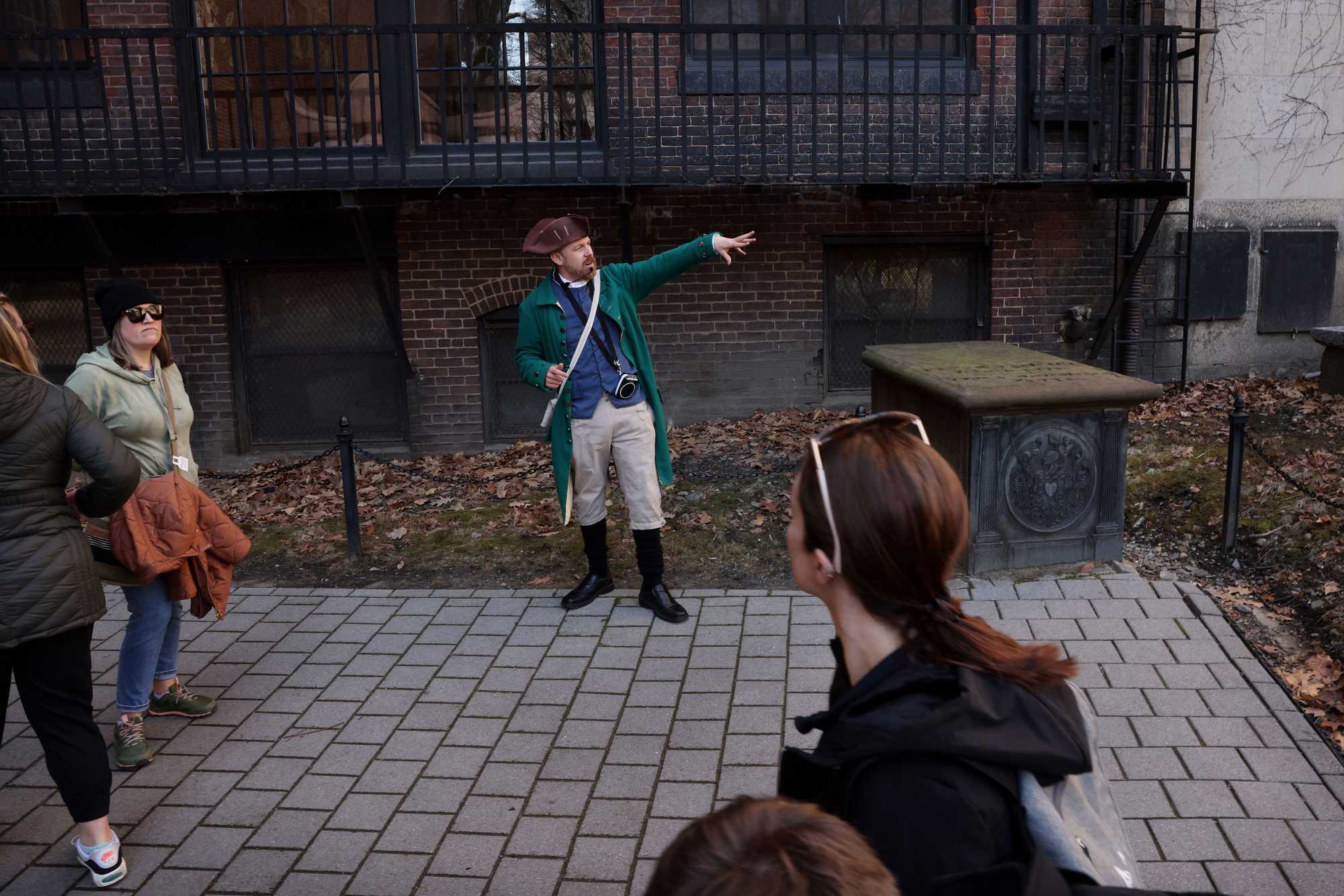
Faneuil never profited directly from this voyage. He had died March 3, 1743, from “dropsy,” an archaic term for edema, or swelling of bodily tissue. But his estate benefited, which meant that Mary Ann and Benjamin Faneuil were made financially more comfortable.
If not for the case in Admiralty Court, the Jolly Batchelor’s mission and cargo probably would not be known today. No other account has survived of the attack on the ship, but the Jolly Batchelor provided a valuable paper trail and additional insights into Faneuil’s business.
Still other clues surfaced for Hanson Plass and his team, who found an apparent connection between Faneuil and a voyage by a ship called the Ranger that carried dozens of enslaved people from the Caribbean island of Antigua to Perth Amboy, N.J., in 1740.
The ship was partly owned by Guilian Verplanck, Faneuil’s agent in New York. After the Ranger returned to New Jersey, Faneuil asked Verplanck for an “accot [sic] of the Negros being sold,” according to a now-lost letter cited more than a century ago by historian William Babcock Weeden.
Although the Ranger was not identified in the letter, Hanson Plass said, he and his team used customs records to connect Faneuil’s query to that voyage, a link he called “a smoking gun.”
“The Ranger left New York for the West Indies in September 1739 and ended up engaging in privateering,” Hanson Plass said. “When the ship finally returned . . . the Ranger had among its cargo 40 enslaved Africans, and Faneuil knew something about it all.”
Although the full extent of Faneuil’s slave trafficking is not known, some historians speculate he became deeply involved in that trade after war broke out in 1739 between Britain and Spain. That conflict blocked access to Spanish ports for American traders and might have prompted Faneuil to seek a new source of profit.
Or perhaps Faneuil had been trading in human beings for far longer. “It seems you don’t just wake up one day and go into the slave market,” Hanson Plass said.
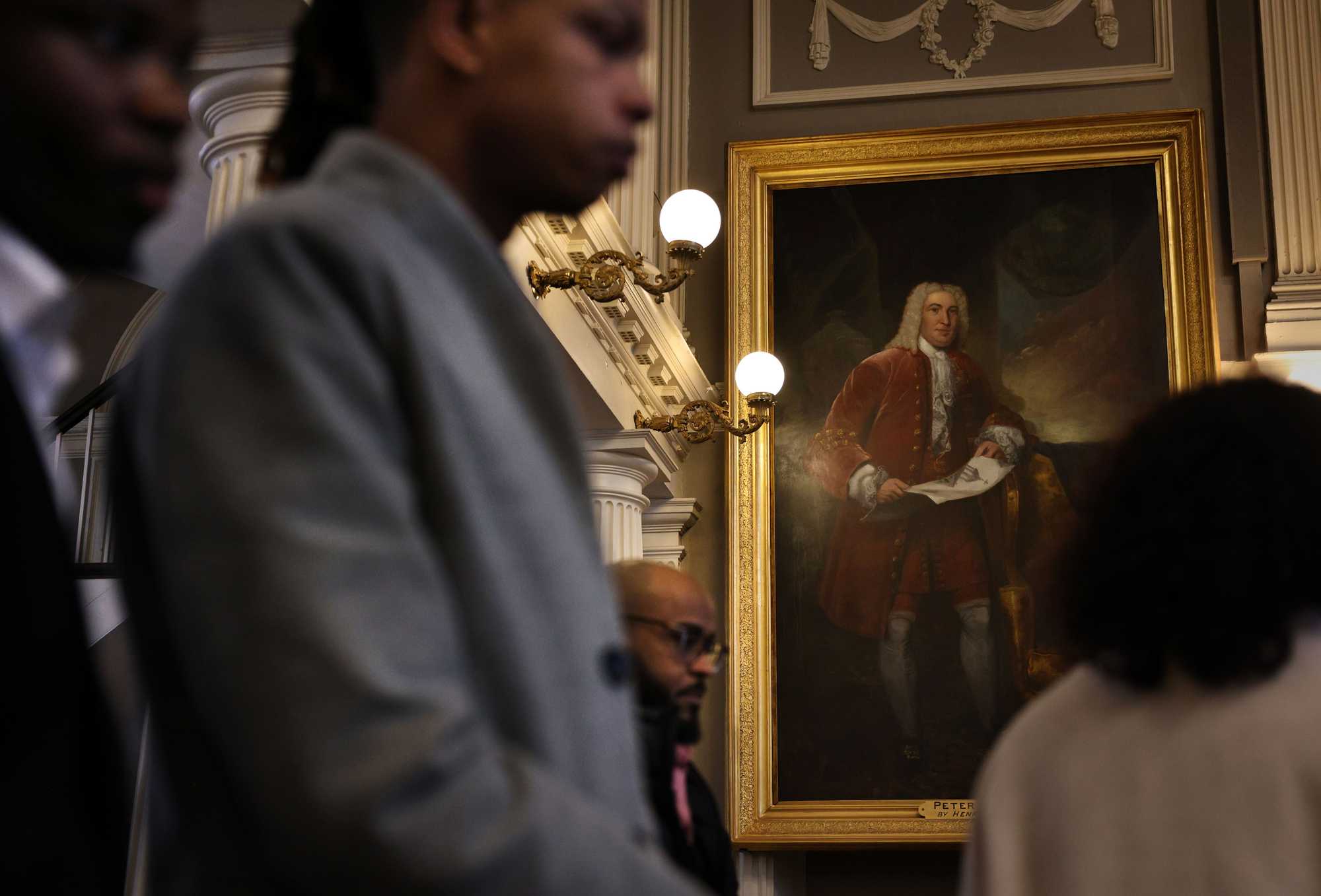
For centuries, the man who donated Faneuil Hall to Boston has remained a mystery to most city dwellers and visitors. Perhaps a few people recognize Peter Faneuil’s portrait in the hall; perhaps a few others know how he made his money; perhaps many people have never thought about him at all.
But as the country reassesses its racial history, a growing awareness is bringing new scrutiny of Colonial Boston’s ties to slavery and of its lingering reputation for racism.
In 2018, Yawkey Way outside Fenway Park reverted to its previous name of Jersey Street, a switch driven by former Red Sox owner Thomas Yawkey’s notoriously slow integration of the team. The following year, the Roxbury crossroads of Dudley Square, named for a Colonial governor and slaveholder, became Nubian Square. And in 2020, a statue of Abraham Lincoln was dismantled in Park Square because of objections to its depiction of a kneeling, newly freed Black man.
The scrutiny now includes a look at Peter Faneuil, sparking a debate laced with deep emotion, even anger. It is a complicated conversation that goes to the heart of Boston’s nearly 400-year-old story — how that narrative unfolded, where it has led, and how it should be remembered.
Activists who want Faneuil’s name removed from the building say it is an outrage to honor a man who made much of his fortune off the enslaved.
“Peter Faneuil has nothing to do with the legacy that has caused that building to be known as the Cradle of Liberty. He contributed nothing to the notions of democracy and inclusivity,” said the Rev. John Gibbons, a minister at Arlington Street Church and one of four activists arrested outside Boston Mayor Michelle Wu’s office in January.
Rev. Kevin Peterson, a minister at The Metropolitan Baptist Church in Dorchester, added that the hall “bears the imprimatur of a slave owner and white supremacist. We feel that is patently immoral. Peter Faneuil’s name defames most of the good things that have happened in that building.”

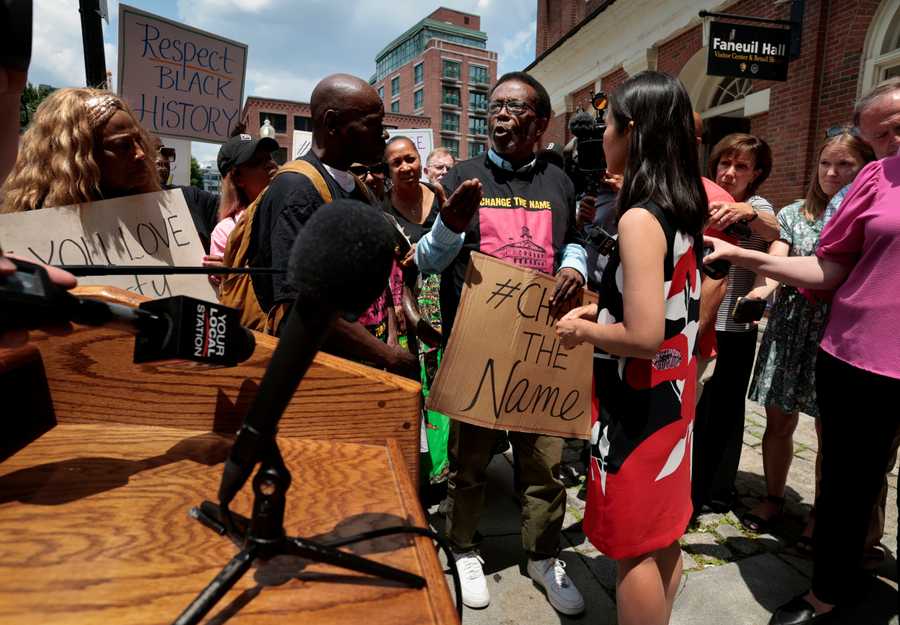
Peterson, Gibbons, and Valerie Copeland, pastor of the Neighborhood Church in Dorchester, chained themselves outside the doors of Faneuil Hall last October.
The activists said Wu and City Council President Ed Flynn, despite repeated requests, have not met with them regarding their call for a public hearing on the name.
“They have run away from this issue,” Peterson said in May at City Hall, where a dozen activists delivered more than 3,000 signatures supporting a name change to Flynn’s office.
Wu has told the Globe that the City Council, not the mayor’s office, is responsible for organizing public discussion on the issue. When asked if she supports a hearing, Wu answered that “I support the council having the conversations that are important to city residents.”
Flynn’s office did not respond to Globe requests for comment.
The National Park Service operates Faneuil Hall as a historic site and visitor center, but the city owns and manages the building, just as it has since it opened in 1742, when Town Meeting voted unanimously to name it for the man who built it.
Peterson said any renaming decision should follow a robust public discussion involving residents throughout the city.
Perhaps the building could be called Freedom Hall or named for Crispus Attucks, a Black and Indigenous man killed by British troops in the Boston Massacre, said Peterson, who founded the nonprofit New Democracy Coalition, which works to broaden voter access and participation.

William Fowler, a retired Northeastern University history professor and past president of the Massachusetts Historical Society, said Faneuil’s name should not be sacrosanct.
“I’m always taken aback by this reverence for Peter Faneuil,” Fowler said. “It’s a community building, and it belongs to all of us.”
A 2021 survey suggested that Bostonians support renaming the hall, with 51 percent in favor, 36 percent opposed, and 12 percent undecided or declining to answer, according to the MassINC Polling Group. Black voters overwhelmingly backed the change, while white voters were nearly evenly split.
Opponents of a change, however, argue that Faneuil Hall’s rich past transcends its builder’s legacy, and that removing his name will squander a chance to use Faneuil’s connections to slavery as a permanent teaching tool about Boston’s racial history.
Byron Rushing, president of the Roxbury Historical Society and a former state representative, struck a cautious tone when asked whether the building should be renamed.
Changing the title “doesn’t mean that there weren’t any more slave traders” in Boston during Faneuil’s life, Rushing said. “The other complication is how the building is used in the 19th century. It becomes a major gathering place for progressives and abolitionists.”
It was there that Bostonians protested British policies that led to the Revolution, and where Frederick Douglass denounced slavery in an 1849 speech against the Mexican War.
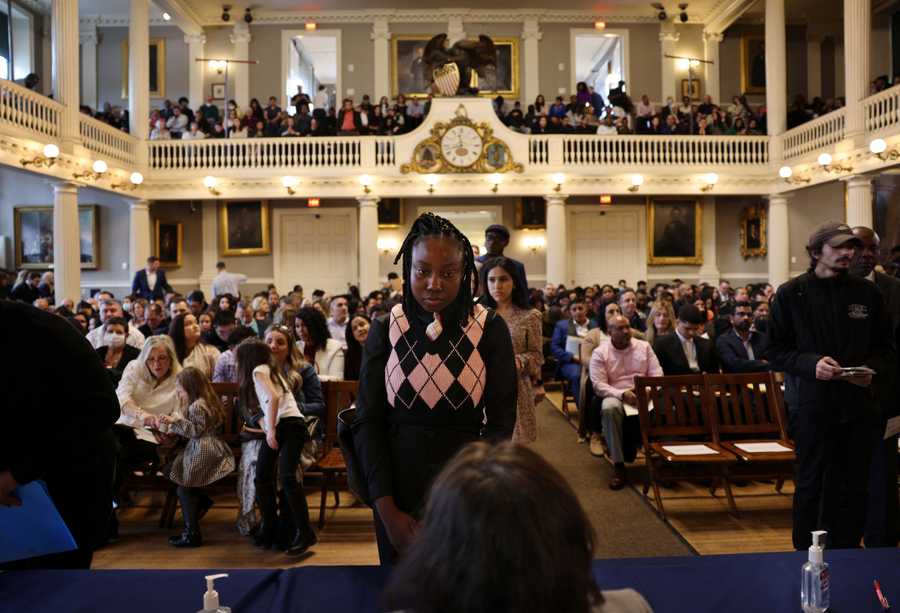
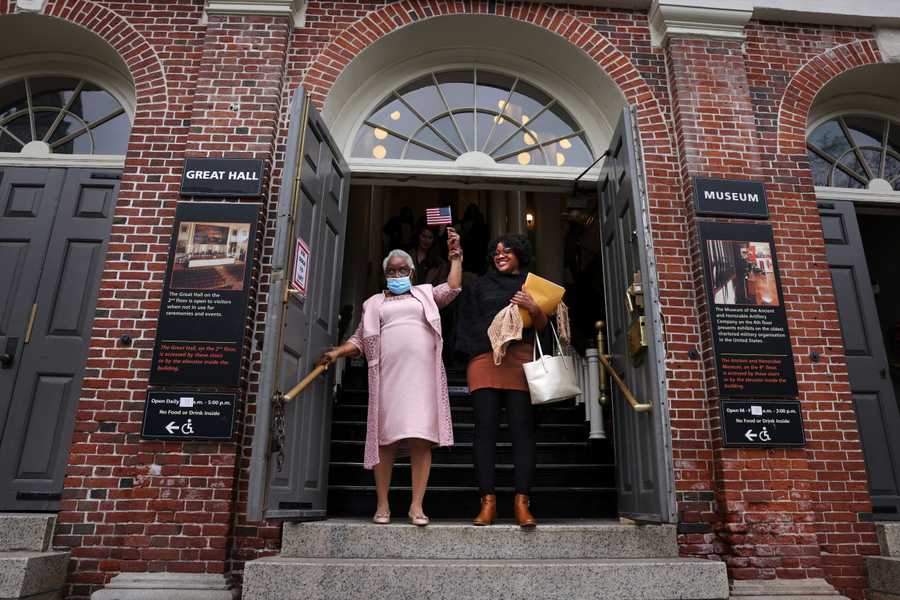
Black Bostonians worshipped in the hall before the African Meeting House opened on Beacon Hill in 1806. Thousands of protesters gathered there in 1854 after the arrest in Boston of an escaped enslaved man under the Fugitive Slave Act. And women’s suffrage champion Lucy Stone assailed the “taxation of women without representation” from its stage in 1873.
More recently, political speeches, candidate debates, school graduations, and rallies for causes ranging from gender equality to health care have been held in the hall, which is now about four times the size of the original structure. And thousands of new citizens take the oath of allegiance inside its walls every year.
Rebuilt after a devastating fire in 1761, Faneuil Hall was enlarged in 1806 to its current footprint of 80,000 square feet. About 2 million people visit the building each year.

The Boston of Peter Faneuil’s time looks vastly different than the city of today, but there are some landmarks you might recognize. Toggle through the points of interest on the (not to scale) drawing below.

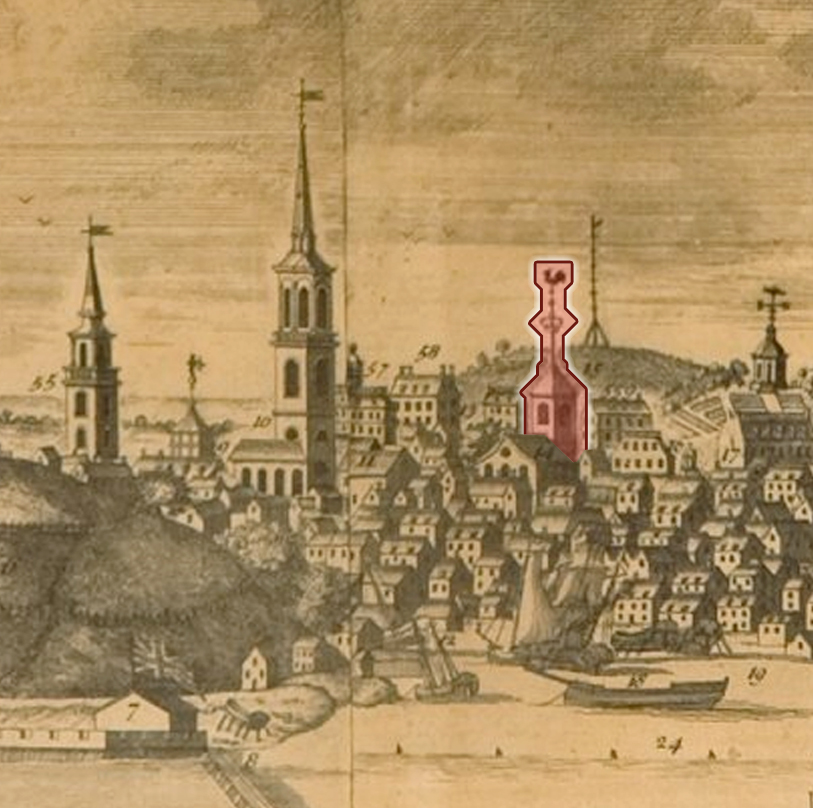
King’s Chapel
In this view, King’s Chapel, which was founded in 1686 and was the first Anglican church in New England, is seen in its original location.
King’s Chapel
In this view, King’s Chapel, which was founded in 1686 and was the first Anglican church in New England, is seen in its original location.
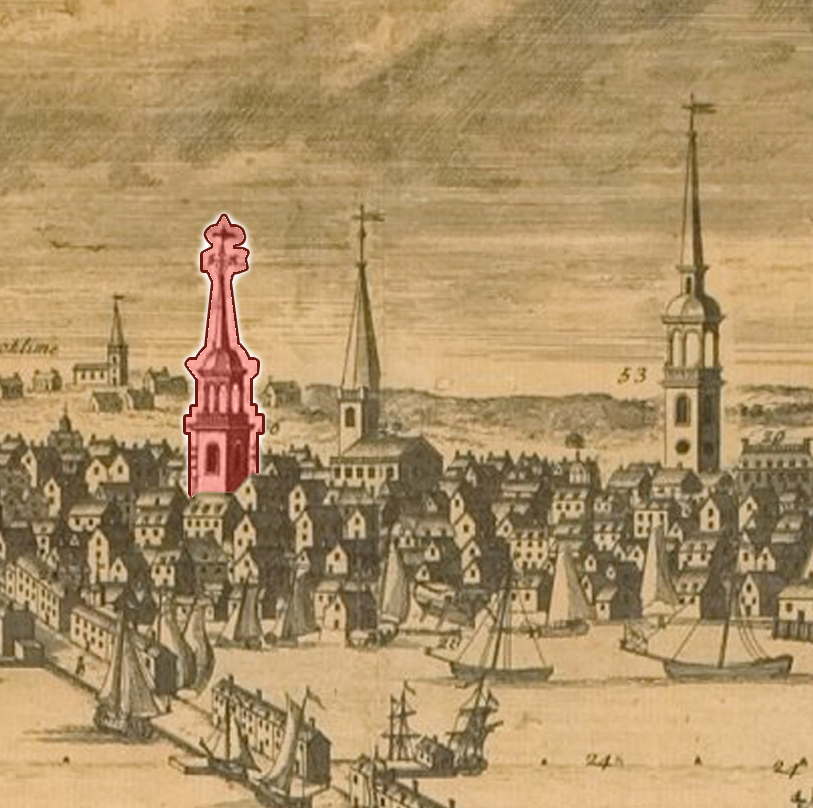
Faneuil Hall
Faneuil financed the construction of the building, which hundreds of years later, still bears his name. The building, originally conceived as a marketplace, was expanded to include a meeting hall on the floor above the market stalls. It was completed in 1742.
Faneuil Hall
Faneuil financed the construction of the building, which hundreds of years later, still bears his name. The building, originally conceived as a marketplace, was expanded to include a meeting hall on the floor above the market stalls. It was completed in 1742.

Old North Church
Officially named Christ Church, Old North Church was built in 1723 and is Boston’s oldest surviving church building. Its fame stems from the start of the Revolutionary War, when signals seen from the church steeple served as a warning that the British army was on its way to Lexington and Concord.
Old North Church
Officially named Christ Church, Old North Church was built in 1723 and is Boston’s oldest surviving church building. Its fame stems from the start of the Revolutionary War, when signals seen from the church steeple served as a warning that the British army was on its way to Lexington and Concord.

Long Wharf
Central to Boston’s booming maritime economy, in the mid-1700s the Long Wharf lived up to its name, extending more than 1,500 feet into Boston Harbor.
Long Wharf
Central to Boston’s booming maritime economy, in the mid-1700s the Long Wharf lived up to its name, extending more than 1,500 feet into Boston Harbor.
Its origins were contentious. Many Bostonians considered Faneuil’s proposal for a ground-level market as a self-serving ploy to concentrate the town’s commerce in a central location. Farmers and hawkers had long gone door to door, and townspeople worried that a central market would drive up prices.
After Faneuil added a second-floor meeting room to sweeten the proposal, the town voted in 1740 by the razor-thin margin — 367 to 360 — to accept Faneuil’s gift. Although he was eulogized three years later as a “comforter and friend,” Faneuil was no stranger to provoking mixed feelings.
Some steps already have been taken regarding Faneuil’s impact and legacy. At the Massachusetts Historical Society, a large portrait of Faneuil has been moved from a prominent space above a public stairway, to a less-conspicuous spot in a meeting room, and now to storage.
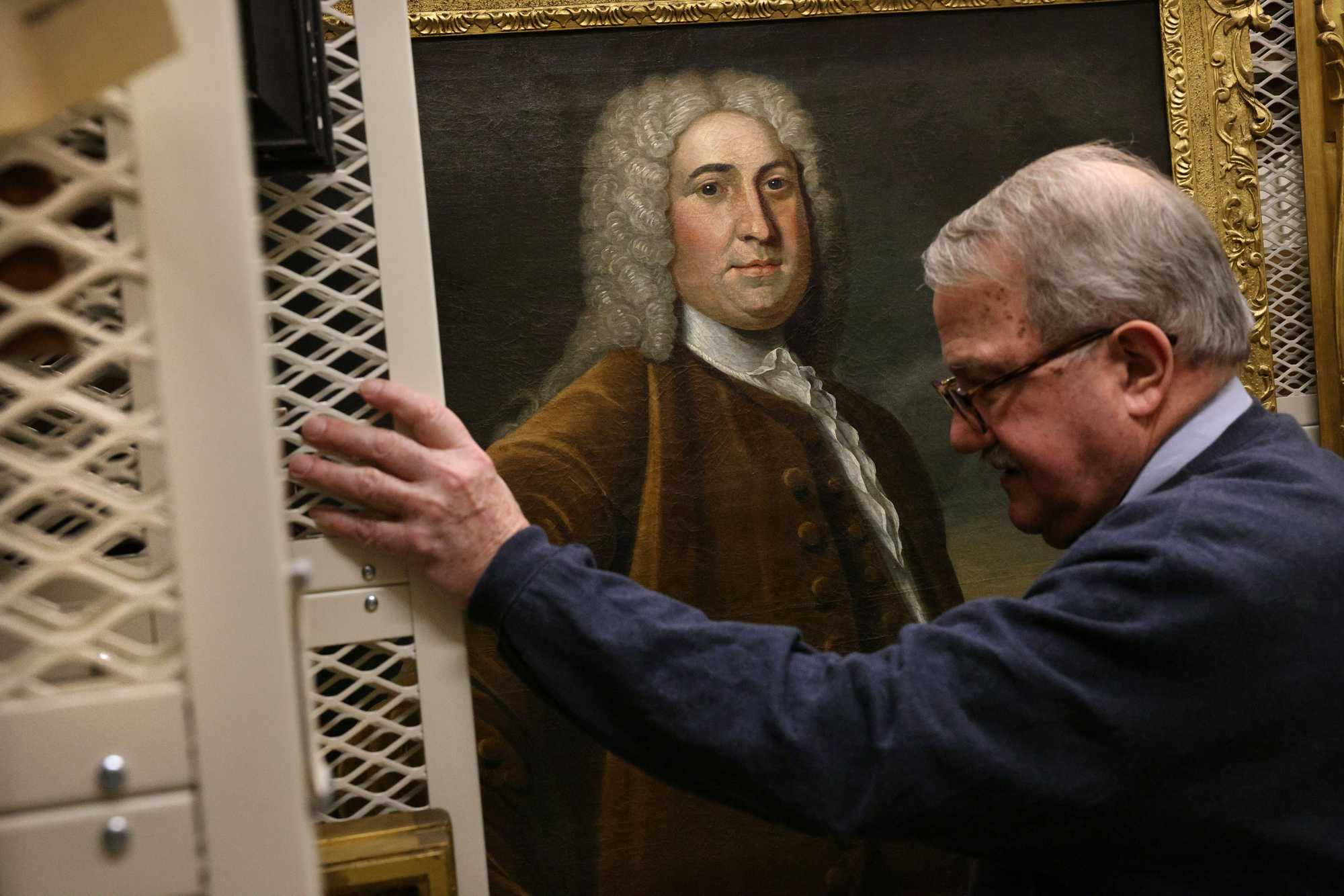
“He was sent to the stacks instead of greeting visitors,” said Drummey, the society’s chief historian, when it became clear that Faneuil’s complicated story could not be explained in a sentence or two below the portrait.
And at Faneuil Hall itself, an exhibit that opened this summer seeks to amplify the little-told story of slavery in Boston.
“I don’t think the majority of the non-Black population of Boston has really been aware of this,” said city archeologist Joseph Bagley, lead planner for the exhibit, which has no set closing date. “It was clear that this story is ready to be talked about.”
A first-floor display presents stories of individual enslaved Bostonians, complemented by artwork, written documents, and artifacts that show how “the story of enslavement permeated the city,” Bagley said.
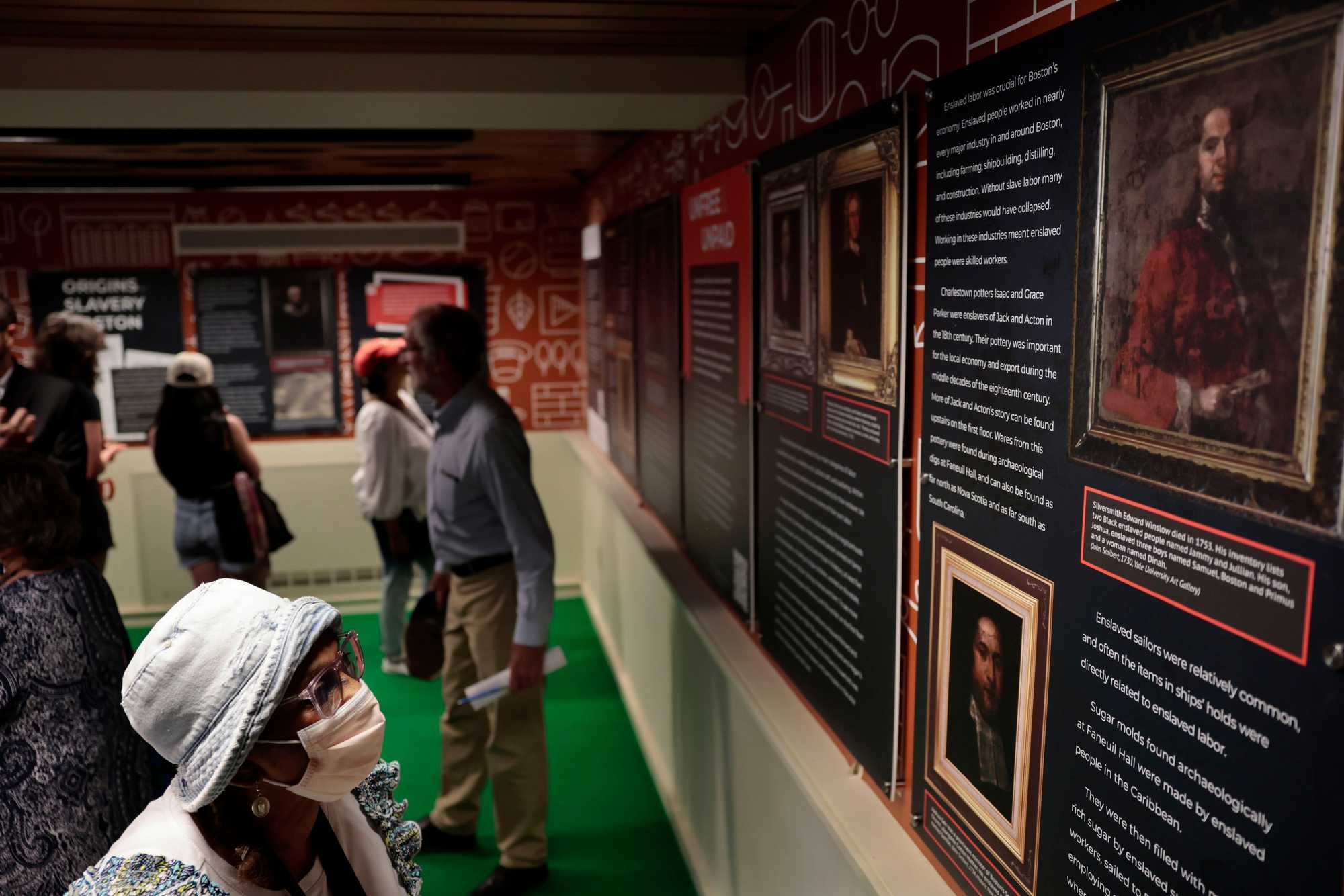
There is pottery made by enslaved people in Charlestown, and utensils for sugar and molasses brought to Boston from slave plantations in the Caribbean.
One floor below, visitors can read “how Bostonians were complicit and directly involved in slavery” and how that “impacts Boston residents of today,” Bagley said. The subterranean location was chosen for a reason.
“We really don’t want to feature the enslavers of the enslaved” as the public enters the building, Bagley said. “We really don’t want to be celebrating them.”
That includes the story of Peter Faneuil.
For Hanson Plass, the former Faneuil Hall ranger, Bostonians bear the responsibility for deciding what the building is called, just as they did in 1742. That’s not a decision for the Park Service or federal government, he said.
“This is the legacy we’ve all inherited. It’s both a physical building, and the legacy of this economy, and this society,” he said. “It’s up to us, ultimately, to decide how that legacy looks.”
